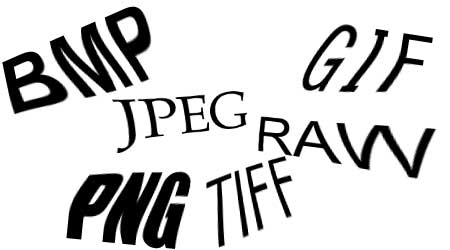Preserving digital image files and dead file formats
A short while ago I was reading an article where the author was proposing we should all print out our documents because digital files were not secure.
It sounds alarmist, not to mention time consuming, but I can see his point. In a nutshell, he was basing his argument on digital versus paper. He noted how paper records have survived thousands of years (in some cases), but that digital files have only been around for only a few decades. Dead file formats To take the point further it was noted how already there exists millions of computer files that are now unreadable – dead file formats. I've experienced this myself. In the early nineties I was writing university dissertations on an Amstrad word processor. It was a dreadful machine – green screen only and no 'preview' available which meant you had to put in codes to turn text to bold for example. And if you didn't turn the bold effect off your document from that point onwards printed out entirely in bold. But the point is that it is now impossible to use these files any longer. The disks the files were stored on no longer exist (and there are no disk drives available), and, as far as I know, the file format isn't supported anywhere either. So even if I could get an old disk drive to work I would have no way of viewing what was on it. I wrote 32,000 words in my final year at university, and I can't retrieve any of them now (which is probably for the best!). Digital photography and un-viewable image files But take this into the world of digital photography and you can see a problem emerging. Here we all are shooting photos in, usually, JPEG format and who knows if we will still be able to view them in ten years from now? Go back to that original argument and it's obvious that there is some credence in this. After all, we can still look at photographs taken a hundred years ago, but there are already some memory cards that are no longer supported. How will we ever see the images contained on them now? I come to a point here where I tend to disagree with the original author. Sure, there is no way I can view my university essays, but there again, there weren't that many computers around in the early nineties either. JPEGs now ubiquitous? I know the number runs into the millions, but that number is dwarfed by the current spread of computers. And with the spread comes the file formats. I believe we have now reached a point where certain file formats have so much penetration that they will never be rendered unreadable. In the music world I can't imagine MP3 files will ever be unreadable. And in the world of digital photography I think JPEGs carry the same weight. Of course, better digital image file formats will appear. But I'm willing to bet that any software that supports the new formats will also support JPEG. So will I be printing out all my photos, just in case a certain file format goes the way of the dodo? No way. Although I must say there are a few 'treasures' that I have printed out – just in case! Darrell. |
Comments for Preserving digital image files and dead file formats
|
||
|
||
|
||
|
Click here to add your own comments Join in and write your own page! It's easy to do. How? Simply click here to return to Articles. |

